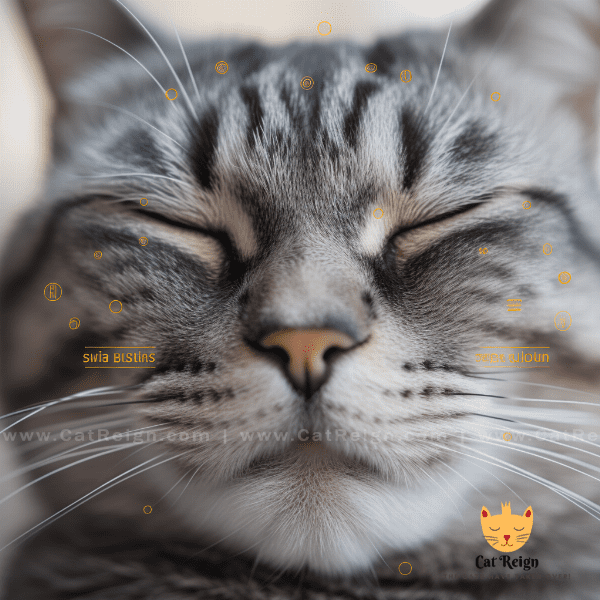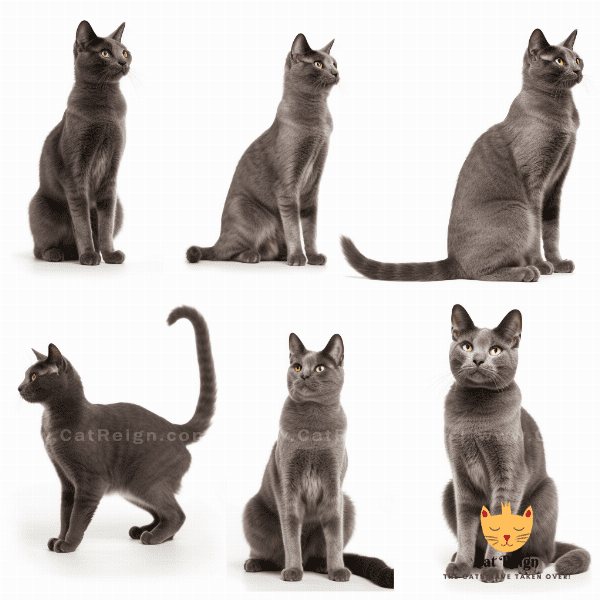Table of Contents
- Understanding Your Cat’s Body Language
- Decoding Common Cat Postures
- The Meaning Behind Tail Positions
- Interpreting Ear and Whisker Positions
- What Your Cat’s Eyes are Telling You
- Unpacking Different Sleeping Positions
- Analyzing Grooming Habits and Posture
- Signs of Fear and Aggression in Cat Posture
- The Importance of Context in Reading Cat Postures
- Strengthening Your Bond Through Body Language Awareness
Understanding Your Cat’s Body Language
As a cat owner, understanding your cat’s body language is essential to building a strong bond and maintaining a healthy relationship. Although cats are known for being independent creatures, they still communicate with their owners using body language.
The Basics of Cat Body Language
A cat’s body language can convey a wide range of emotions and feelings. Understanding the basics of Cat body language will help you recognize when your cat is feeling happy, relaxed, anxious, or stressed.
Some common cues to look for include the position of the ears, tail, and whiskers. Additionally, the dilation of the pupils and the way your cat holds its body can also provide important clues.
Reading Your Cat’s Tail Positions
A cat’s tail position can be one of the most telling signs of their current mood. If their tail is standing straight up, it could indicate that they are feeling confident and content. Conversely, if their tail is tucked between their legs, it could be a sign that they are feeling fearful or anxious.
Analyzing Your Cat’s Ear and Whisker Positions
Another important aspect of cat body language is the position of their ears and whiskers. Ears that are pinned back against the head could indicate that your cat is feeling stressed or anxious. Similarly, twitching or tense whiskers can be a sign that your cat is feeling uneasy.
The Importance of Eye Contact and Pupil Dilation
Cats use their eyes to communicate a wide range of emotions. For instance, if your cat maintains direct eye contact with you, it could indicate that they are feeling affectionate or playful. Conversely, if their pupils are dilated and they are avoiding eye contact, it could be a sign that they are feeling overwhelmed or threatened.
Conclusion
Understanding your cat’s body language is key to fostering a strong and healthy bond with your furry friend. By learning to recognize their cues, you can better respond to their needs and create a more fulfilling relationship with your feline companion.
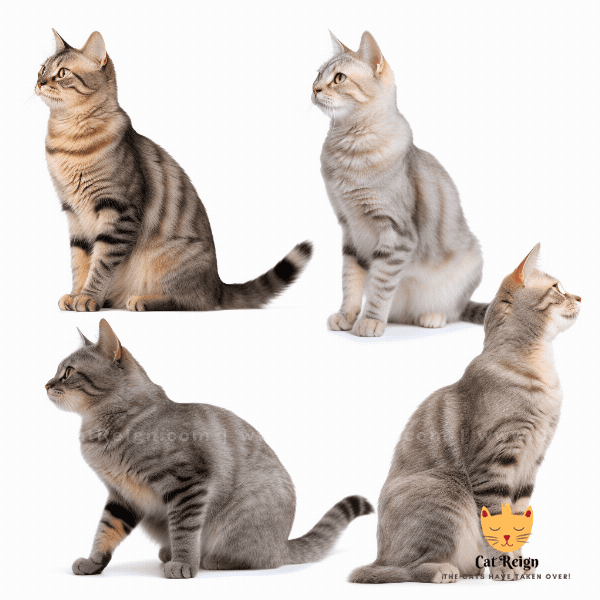
Decoding Common Cat Postures
Cats are known for their unique and varied postures, each of which can communicate a different message. Understanding these common postures is crucial to interpreting your cat’s body language and communicating with them effectively.
The Crouch and Pounce
One of the most common cat postures is the crouch and pounce. This posture typically indicates that your cat is ready to play or hunt. Look for a low crouching position, with their weight on their back legs and their front legs extended.
The Stretch and Roll
Cats love to stretch and roll, and this posture is a sign that they are feeling relaxed and content. Look for your cat to extend their front and back legs, arch their back, and roll onto their side or back.
The Tummy Up
While a relaxed and content cat may show you their tummy, it’s important to remember that this is not an invitation to pet them. A cat lying on their back with their tummy exposed is indicating that they trust you, but they are still in a vulnerable position.
The Tail Flick
A flicking tail is often a sign that your cat is feeling irritated or annoyed. If your cat’s tail is flicking rapidly back and forth, it’s best to leave them alone and let them calm down.
Conclusion
By understanding the common postures that cats use to communicate, you can better interpret your feline companion’s body language and respond appropriately. Whether your cat is feeling playful, relaxed, threatened, or irritated, their postures can provide important clues to their emotional state.

The Meaning Behind Tail Positions
A cat’s tail is one of the most expressive parts of their body, and the position of their tail can convey a wide range of emotions and messages. Understanding the meaning behind different tail positions can help you better understand your cat’s moods and behavior.
The Straight Up Tail
When a cat holds their tail straight up in the air, it typically indicates that they are feeling confident and content. This posture is often seen when a cat is greeting a familiar person or exploring their environment.
The Tail Wrapped Around Another Cat or Object
Cats will often wrap their tails around other cats, objects, or even their owners. This is a sign of affection and is a way for your cat to show that they feel comfortable and secure in their surroundings.
The Puffed Up Tail
If your cat’s tail is puffed up like a bottle brush, it’s a sign that they are feeling threatened or frightened. This posture is often seen when a cat is confronted by a predator or other perceived threat.
The Tucked Under Tail
When a cat tucks their tail under their body, it’s usually a sign that they are feeling anxious, submissive, or scared. This posture is often seen when a cat is being introduced to a new environment or meeting unfamiliar people or animals.
The Tail Twitch
Cats will often twitch their tails when they are feeling agitated, annoyed, or excited. This posture is often seen when a cat is hunting or playing.
Conclusion
Understanding the meaning behind different tail positions is essential to interpreting your cat’s body language and responding appropriately. By paying attention to your cat’s tail, you can gain insight into their emotions and behavior and strengthen your bond with your feline companion.
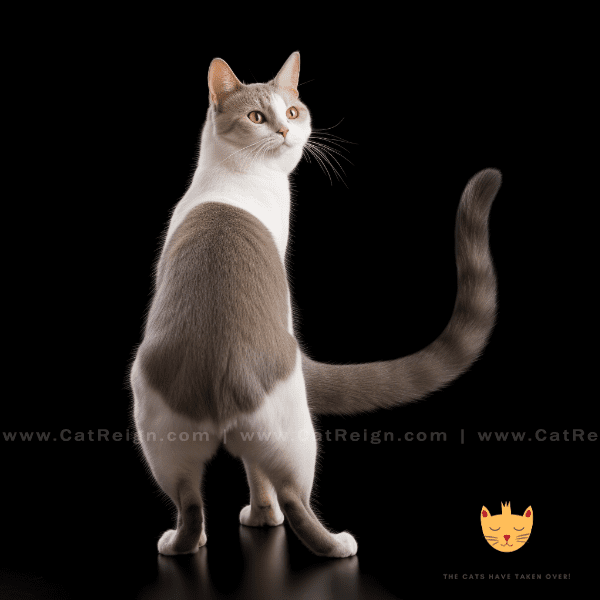
Interpreting Ear and Whisker Positions
Cats use not only their tails, but also their ears and whiskers to communicate their emotions and intentions. Interpreting these subtle signals is key to understanding your cat’s body language and strengthening your bond with them.
The Position of the Ears
A cat’s ears can tell you a lot about their emotional state. When a cat’s ears are forward and upright, it indicates that they are feeling alert and curious. However, when their ears are flattened against their head, it’s a sign that they are feeling scared, anxious, or angry.
The Angle of the Whiskers
Whiskers are highly sensitive and can give cats important information about their environment. When a cat’s whiskers are relaxed and pointing forward, it indicates that they are feeling calm and content. However, if their whiskers are pointing backwards, it could be a sign that they are feeling threatened or agitated.
The Importance of Ear and Whisker Movements
It’s not just the position of their ears and whiskers that are important, but also their movements. For example, if your cat’s ears are twitching or moving around a lot, it could be a sign that they are feeling excited or playful. Similarly, if their whiskers are twitching, it could indicate that they are feeling nervous or uneasy.
Conclusion
Interpreting your cat’s ear and whisker positions is an important part of understanding their body language and responding appropriately to their needs. By paying attention to these subtle signals, you can strengthen your bond with your cat and create a more fulfilling relationship with your furry companion.
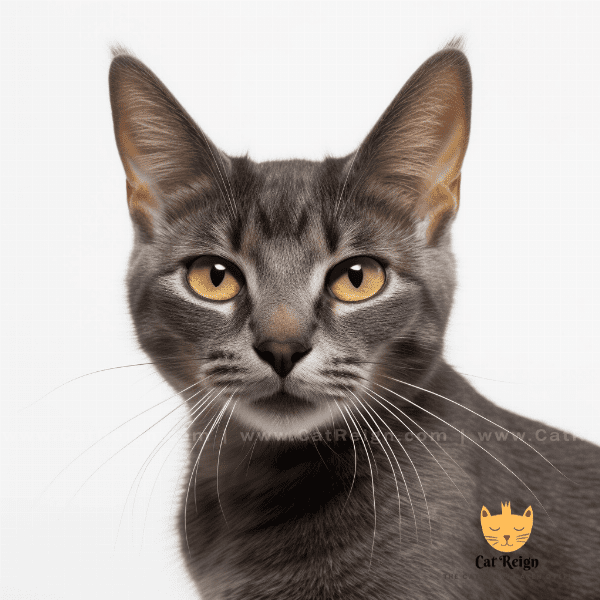
What Your Cat’s Eyes are Telling You
Cats use their eyes to communicate a wide range of emotions and intentions. Understanding what your cat’s eyes are telling you can help you better understand their needs and strengthen your bond with them.
Dilated Pupils
One of the most important things to look for in your cat’s eyes is the size of their pupils. Dilated pupils indicate that your cat is feeling excited or stimulated. This could be a sign that they are ready to play or hunt. However, dilated pupils can also be a sign of fear or anxiety, so it’s important to pay attention to other body language cues as well.
Constricted Pupils
Constricted pupils, on the other hand, indicate that your cat is feeling relaxed and content. This is often seen when a cat is lounging in the sun or being petted by their owner. However, constricted pupils can also be a sign of illness or pain, so it’s important to take note of any other symptoms your cat may be exhibiting.
Direct Eye Contact
When a cat maintains direct eye contact with you, it’s often a sign of trust and affection. This is particularly true if they are blinking slowly or squinting, which is a sign that they are feeling relaxed and comfortable in your presence.
Avoiding Eye Contact
If your cat avoids eye contact or their pupils are dilated while avoiding eye contact, it could be a sign that they are feeling anxious or threatened. This could be a sign that they need some space or that they are feeling overwhelmed.
Conclusion
By paying attention to your cat’s eyes, you can gain valuable insight into their emotional state and respond appropriately to their needs. Whether your cat is feeling playful, relaxed, anxious, or threatened, their eyes can provide important clues to their current mood and behavior.
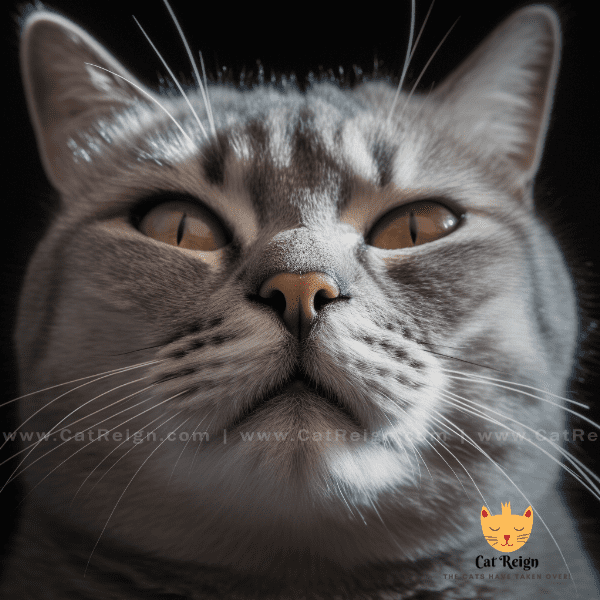
Unpacking Different Sleeping Positions
Cats are known for their love of sleep, and they have a wide range of sleeping positions that they use to get comfortable. Understanding these different sleeping positions can provide insight into your cat’s physical and emotional needs.
The Curled Up Position
One of the most common sleeping positions for cats is the curled up position. This is when a cat tucks their head under their body and wraps their tail around their feet. This position is not only comfortable for cats, but it also provides a sense of security and protection.
The Stretched Out Position
Another common sleeping position is the stretched out position, where a cat lies on their side or back with their legs extended. This position is typically seen when a cat is feeling relaxed and comfortable in their environment.
The Hiding Position
Cats will often seek out hiding places to sleep, such as under furniture or in enclosed spaces. This position provides a sense of security and protection, and is often seen when a cat is feeling anxious or stressed.
The Elevated Position
Cats may also choose to sleep in elevated positions, such as on top of furniture or perched on a windowsill. This position not only provides a sense of security and protection, but also allows cats to survey their environment and keep an eye on potential threats.
Conclusion
By understanding the different sleeping positions that cats use, you can gain insight into their physical and emotional needs. Whether your cat is curled up, stretched out, hiding, or elevated, their sleeping position can provide important clues to their overall well-being. By providing a comfortable and secure sleeping environment, you can help your cat get the rest they need to stay healthy and happy.
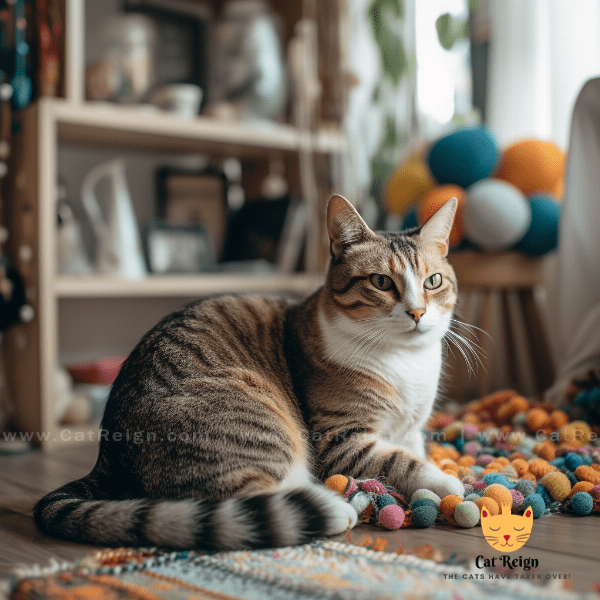
Analyzing Grooming Habits and Posture
Cats are known for their meticulous grooming habits, which not only keep them clean but also provide important information about their emotional state. By analyzing your cat’s grooming habits and posture, you can gain insight into their overall well-being.
The Importance of Grooming
Grooming is a natural behavior for cats, and they will spend a significant amount of time each day cleaning themselves. This not only helps to keep their fur clean and shiny, but it also helps them to relax and de-stress.
Signs of Stress or Anxiety
While grooming is a healthy behavior for cats, changes in their grooming habits can be a sign of stress or anxiety. For example, if your cat suddenly stops grooming themselves, it could be a sign that they are feeling overwhelmed or unwell.
Posture and Grooming
Cats will often use their posture while grooming to communicate their emotions and intentions. For example, a cat that is licking their paws while sitting with their back hunched may be feeling anxious or stressed. Conversely, a cat that is grooming themselves while stretched out and relaxed is likely feeling content and comfortable.
Over-Grooming
In some cases, cats may engage in excessive grooming behaviors, which can lead to skin irritation and other health problems. This is often seen in cats that are feeling anxious or stressed, and it’s important to address the underlying cause of the behavior in order to prevent further health issues.
Conclusion
Analyzing your cat’s grooming habits and posture is an important part of understanding their emotional state and overall well-being. By paying attention to changes in their grooming behaviors and posture, you can respond appropriately to their needs and help them maintain a healthy and happy life.
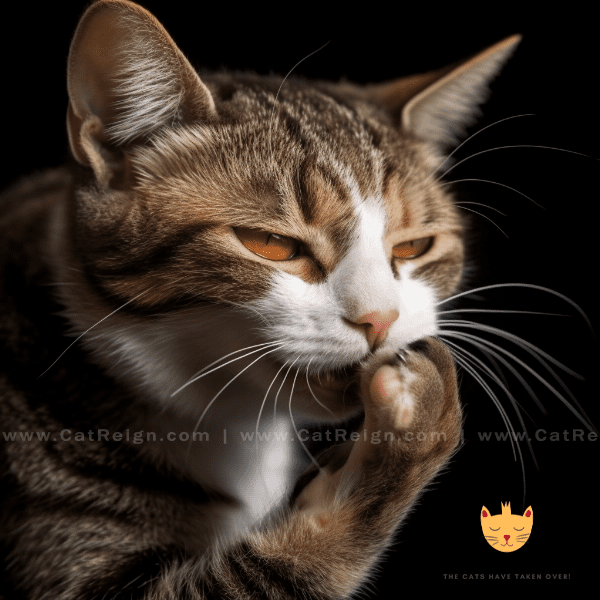
Signs of Fear and Aggression in Cat Posture
While cats are generally known for their laid-back and independent personalities, they can become fearful or aggressive in certain situations. Understanding the signs of fear and aggression in cat posture is crucial to maintaining a safe and happy environment for both you and your feline companion.
The Hunched Back and Flattened Ears
When a cat’s back is hunched and their ears are flattened against their head, it’s usually a sign that they are feeling threatened or aggressive. This posture makes the cat appear larger and more intimidating to potential predators or threats.
The Puffed Up Tail and Arched Back
Another sign of aggression or fear is when a cat puffs up their tail and arches their back. This posture is often accompanied by hissing or growling and is a clear indication that the cat is feeling threatened or defensive.
The Cowering or Tucked In Position
When a cat cowers or tucks themselves into a small space, it’s often a sign that they are feeling fearful or anxious. This posture is an attempt to make themselves smaller and less visible to potential threats.
The Dilated Pupils and Avoiding Eye Contact
When a cat’s pupils are dilated and they avoid eye contact, it’s often a sign that they are feeling overwhelmed or threatened. This is a common posture seen in cats that are experiencing anxiety or stress.
Conclusion
Understanding the signs of fear and aggression in cat posture is essential to maintaining a safe and healthy environment for both you and your cat. By paying attention to your cat’s body language and responding appropriately to their needs, you can prevent potentially dangerous situations and create a more fulfilling relationship with your feline companion.

The Importance of Context in Reading Cat Postures
While understanding the meaning behind different cat postures is essential to interpreting your cat’s body language, it’s important to remember that context plays a significant role in how these postures are interpreted.
The Role of Environment
The environment in which your cat is displaying a certain posture can greatly affect its meaning. For example, a cat that is hunched up with flattened ears may be displaying aggression if they are confronted by a perceived threat, but the same posture in a relaxed and comfortable environment may simply be a sign of relaxation.
The Role of Previous Experiences
A cat’s previous experiences can also affect how they display certain postures. For example, a cat that has had a negative experience with a certain object or situation may display fear or aggression even in a relatively safe environment.
The Role of Body Language Cues
Reading cat postures in isolation can be misleading, as body language cues often work together to convey a message. For example, a cat that is arching their back and puffing up their tail may also be hissing or growling, which would clearly indicate aggression or fear.
The Importance of Observation
In order to accurately interpret your cat’s body language, it’s important to observe their behavior in a variety of situations and environments. This will allow you to understand your cat’s unique communication style and respond appropriately to their needs.
Conclusion
Understanding cat postures is a valuable tool for interpreting your cat’s body language and strengthening your bond with them. However, it’s important to remember that context plays a significant role in how these postures are interpreted. By observing your cat’s behavior in a variety of situations and paying attention to body language cues, you can gain a deeper understanding of your cat’s needs and emotions.
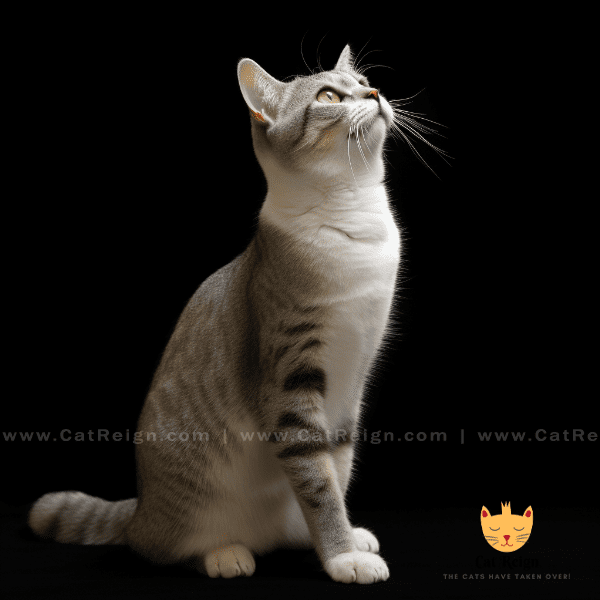
Strengthening Your Bond Through Body Language Awareness
Body language awareness is a key component of strengthening your bond with your cat. By understanding your cat’s body language, you can communicate more effectively with them and respond appropriately to their needs.
Creating a Comfortable Environment
Creating a comfortable environment for your cat is an important part of strengthening your bond. By providing a safe and comfortable space for your cat to live in, you can help reduce stress and anxiety and promote a positive relationship between you and your feline companion.
Paying Attention to Body Language Cues
Paying attention to your cat’s body language cues is essential to understanding their needs and emotions. By observing their posture, tail movements, ear positions, and other cues, you can gain valuable insight into their emotional state and respond appropriately.
Positive Reinforcement
Positive reinforcement is an effective way to strengthen your bond with your cat. By rewarding good behavior with treats, praise, and affection, you can reinforce positive behaviors and build a strong and positive relationship with your cat.
Spending Quality Time Together
Spending quality time with your cat is another important way to strengthen your bond. Whether it’s playing with toys, grooming them, or simply cuddling on the couch, spending time with your cat can help create a deep and lasting connection.
Conclusion
Strengthening your bond with your cat is a rewarding and fulfilling experience that requires patience, love, and a willingness to learn. By creating a comfortable environment, paying attention to body language cues, providing positive reinforcement, and spending quality time together, you can create a deep and lasting connection with your feline companion.


